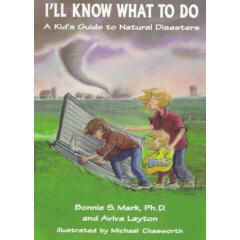Whether they are out to change the world,
save the environment, or just tackle the daily challenges of
growing up, kids and teens can benefit from the sense of
competency and self-confidence that comes from engaging in a
service project.
Plus, community service is a great way to build life experience,
potential job skills, and to build an impressive resume that
will come in handy when they are applying for jobs,
scholarships, and college admissions. Below is a listing of many
different types of service projects that a
family, school, or KIDS CLUB chapter might do. Please contact us
with any questions or suggestions or to let us know how your
service project went.
Grow a School Garden
Kids spend
many hours a day in school and a garden is one way to
reintroduce nature into the school day. Kids can plant, water,
weed, care for the soil, harvest, and EAT! Did you know, some
schools grow enough food in their school garden to provide part
of the produce needed in the school cafeteria? But if your
school doesn’t have a garden, perhaps you could help get one
started. Talk to teachers, school administrators, and the
student council. Come up with a proposal together and be sure to
let parents in on the project. You will need parents to help
organize donations of labor and materials. And of course, you
will need to help make a plan for taking care of that garden.
Teachers can help coordinate whose classes will help with
watering and other tasks.
Adults will want to read Asphalt to
Ecosystems, by Sharon Danks for a comprehensive look at
transforming your schoolyard.
See also:
http://www.evergreen.ca/en/resources/schools/all-hands/
for how to get started and
http://www.greenhearted.org/school-gardens.html for
some fun ideas & examples.
Share Your
Lunch
A project of the Second
Harvest Food Bank, the Share Your Lunch drive collects donations
of food and cash to help feed local children. Kids can organize
neighbors, schools, church groups, or etc. to collect donations.
Just contact Second
Harvest Food Bank to arrange for a bin to
be dropped off. Be sure to ask about donating produce from your
garden as well! You can get more info on the Share Your Lunch
program here:
http://www.shfb.org/shareyourlunch/
Give Free
Books
The We Give Books program
is a free online program that allows anyone with access to the
Internet to put books in the
hands of children who don't have
them, simply by reading online! Just choose the charity you want
to read for and then select the books you want to read. For each
book you read online, they donate a book to a leading literacy
group on your behalf. The more you read, the more they give. To
learn more visit:
http://www.wegivebooks.org
Volunteer
at a Local Wildlife Preserve
Wherever you live, there's some kind of local wildlife that
needs human beings to protect and nurture it, and this might be
a great place for you to volunteer your time. You could help out
with folding newsletters, taking care of the grounds, making
decorations for special events, or helping out with classes and
workshops for younger kids. Just let them know you think it's a
special place and that you'd
really like to help out. Even if
they don't have a regular task for you, they'll put you on their
contact list, to notify you when they need help. See what the US
Fish & Wildlife Service has to say about volunteering:
http://www.fws.gov/volunteers/
Donate a
Tree… Or a Goat!
Through Heifer
International you can actually help people around the world stop
and even reverse deforestation by donating money for H.I. to
give them trees and seedlings. You can also select a farm animal
that will help them produce milk, eggs, meat, or wool. Donating
through Heifer International could be a family project, a great
gift to give in a loved one’s honor, or an excellent goal for a
fundraising project!
http://www.heifer.org/
Build or
Repair Someone’s Home
Join
Habitat for Humanity in the fight against homelessness and
against unsafe or inadequate housing around the world!
Habitat for Humanity has projects and volunteer opportunities
for youth ages 5 to 25, as well as their teachers and
youth
group leaders. To learn more visit:
http://www.habitat.org/
Pick Up
Litter
Litter is more than
unsightly. It ends up in storm drains and washes into our local
rivers and oceans where it creates serious problems for
wildlife. Contact your local parks department, local water
district, or wildlife preserves for information about upcoming
clean up opportunities. Many cities have “adopt a park” programs
where families and other groups (like an E.K. KIDS CLUB chapter)
can sign up to do regular clean-up – monthly, quarterly, or more
often. But of course, putting litter in its place doesn’t have
to be a special event. Whether you’re an All-Star Stan or a Keep
It Clean Jean, you can keep your school or neighborhood litter
free:
http://www.litterproject.com/
Start a
Recycling Drive
Putting
litter in its place is a great start. But do you know where all
that litter goes if you don’t recycle it? It goes into the
landfill! And every time a landfill gets full, a new place must
be found to become the next garbage dump. What’s more, not only do
these new landfill sites take habitat away from animals and
nature access away from human beings, but they also become a
nasty chemical stew that can potentially release hazardous
chemicals into the air, the water, and the earth. So let’s
recycle! Work with your family to cut down on the amount of
stuff you put into the landfill. Then ask your teachers, school
administrators, and student council about your school’s
recycling policy. Ask them to help you come up with a plan to
cut down
on your school’s garbage (land fill) production and
increase recycling efforts. To learn more about starting a
recycling program in your school:
http://www.calrecycle.ca.gov/ReduceWaste/Schools/default.htm
Compost
Your School Lunch
Well your lunch
leftovers that is. What does your school do with all those apple
cores and banana peels and other leftover foodstuffs from the
cafeteria? Chances are they toss it in the trash, and from there
it goes into the landfill. Talk
to your school officials and
student council about composting all that waste instead.
Composting is where natural refuse is allowed to rot down in a
special way that helps it turn back into enrichment for the
soil. Does your school have
a garden? If so, the compost
could then be used to maintain the nutrients in the soil,
eliminating the need to add nasty chemical fertilizers. For more
info:
http://www.greenmountainfarmtoschool.org/wp/wp-content/uploads/Guide-to-Staring-a-School-Compost-Program.pdf
Get
Prepared at Home & at School
Just
like brushing our teeth, eating right, and getting regular
check-ups, emergency preparedness is something we do to take
care of ourselves and our families. Hopefully you will never
have to deal with a natural disaster, but isn’t it nice to know
you’d be ready if it happened? Review your preparedness plans
with your family and identify what you can do to become better
prepared. Talk to your school or KIDS CLUB chapter about hosting
an Emergency Preparedness Challenge Month. Group members can
share information and work with their families then report back
to the group on what actions they have taken to be ready. For
more information:
http://www.earthskids.com/featured-archive-emergency_preparedness-intro.aspx
Help Out at
Your Local Animal Shelter
Your
local animal shelter is desperately in need of donations -- pet
supplies, money, and volunteer help. Call or stop by your local
animal shelter, or check their web page, and let them know you
would like to help out. If you are under 16, your shelter may
not be able to have you work on site with the animals (liability
issues). But you may be able to help out in other ways, such as
collecting donations of old blankets or fostering animals in
your home. Google ” Humane Society [name of your town]” to find
a shelter near you.
More
Ways to Give Service, Some Suggestions
There are many other ways to help out in your community -- helping out in a
classroom with children younger than yourself, visiting someone who's
lonely or new to the neighborhood, helping pass out food or blankets
to the homeless, helping care for stray animals -- just to name a
few.
Other places to check to offer your help are: your
local
community center, the
library, local churches,
museums,
and local schools. Also try, retirement homes for the
elderly, shelters for battered/abused women and their children, and your
local food bank . All of these may
have jobs that young people can help out with.
Helpful Links
The
Big Help

The Big Help -"Nickelodeon's ongoing,
pro-social campaign to connect kids to their communities through
volunteering. " This year's Big Help focus is on parks cleaning
and fixing up local parks. The slogan is: "Make your mark! Help
your park!"
Roots
& Shoots
Sponsored by the Jane Goodall institute
The mission of this program is "to foster
respect and compassion for all living things, to promote
understanding of all cultures and beliefs and to inspire each
individual to take action to make the world a better place for the
environment, animals and the human community. All Roots & Shoots
members, from pre-K to university, demonstrate their care and concern
for living things through service projects in their communities."
For more information about how you can get
involved, visit their web page,
read up on what Roots & Shoots are doing in your area or how you
can help start a local chapter yourself. There are also ideas for
things that you can do all on your own. Don't forget to join their
online mailing list so you can find out about upcoming events.
Hands-On
Network
HandsOn Network, an enterprise of
Points of Light, is the largest network of
250 volunteer action centers that extend to 16 countries around the world. These centers help people find and engage in volunteer opportunities in their local communities. They focus on innovative approaches to leveraging individual and corporate time and talent to solve community challenges. They also partner with more than 70,000 corporate, faith and nonprofit organizations to manage volunteer resources, and developing the leadership capacity of volunteers. Annually, the network delivers approximately 30 million hours of volunteer service valued at $626 million.
http://www.handsonnetwork.org
Youth
Service America
This resource center hosts an alliance of over 200 organizations
committed to strengthening the "Effectiveness, Sustainability,
and Scale of the youth service movement." Y.S.A. promotes local
solutions to community problems. Check this site for ideas about how
to volunteer in your community and who to contact to get started or
for more information.
http://www.ysa.org/









